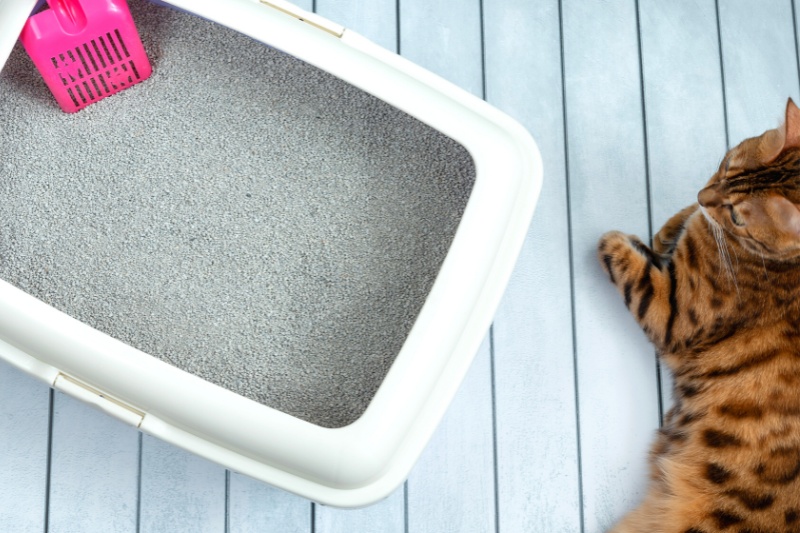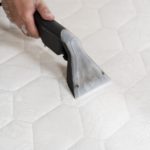Cats, it’s commonly remarked, are among life’s real independent souls. Often inscrutable, fiercely free-spirited and usually pretty much impossible to tame completely, a cat’s life is a wild life.
Not every cat however is as fully wild as others. Not every one of them for instance is a fully paid-up member of the outside toilet club.
Some cats, for various reasons either to do with their health or their owners’ circumstances, adopt the litter tray route when they need to pay a visit to the facilities.
Those owners who are left with the results of such activities might feel a little reluctant to get stuck into things any more frequently than they have to.
We’ll see just how often you should be cleaning that litter box, as well as, of course, how to actually do the deed and render things as clean as you and your cat might like.
How Often Should You Clean a Cat Litter Box?
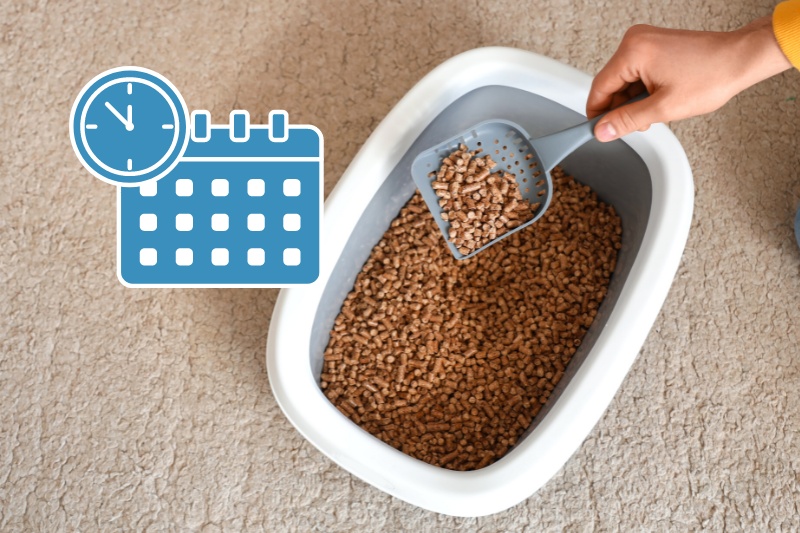
So, here’s the first question. If you’ve already cleaned your cat litter box today then the good news is that you can leave it for a little while yet.
Unless, that is, you have a cat with a singularly productive bottom, or a whole bunch of cats. Anyone know the collective noun for cats? A clowder. Who knew? Just cats, pretty much. And they were giving nothing away. Anyway, do see later for advice on how many trays you should make available in this case.
If your box is used by just one cat with an averagely expressive digestive system, you’ll need to give the tray a good cleaning every time you replace the entire litter contents, which should be around once a week, according to the Battersea Dogs and Cats Home.
Do note however that this is for clumping litter. If you use non-clumping litter, you will probably have to clean the tray more often, as it will mean that urine can collect in the bottom of the tray.
With clumping litter you should be removing solids and clumps of litter at least once a day, disposing of safely (perhaps consider a Litter Genie for the purpose) and putting in fresh litter to replace.
I’m afraid a very dirty tray is something of a deal breaker for cats, and they may decide to use alternative facilities if the tray is adjudged too shoddy for them. Your slippers, for instance.
Things to Know Before Cleaning a Cat Litter Box
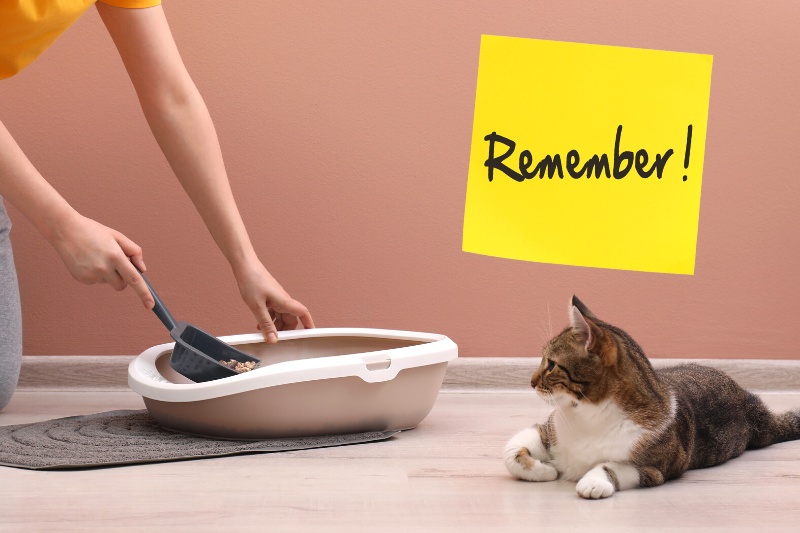
So, we’ve put it off long enough. Let’s get that box clean. We’ve got four methods for you. But first:
- Always use protective gloves when cleaning a cat litter box, and consider putting a facemask on too. There are some nasty bits and pieces lurking in that litter, and to keep cases of toxoplasmosis to a minimum, we need to think about what we’re doing.
- Other equipment to have to hand is a scrubbing brush or scourer, paper towel and fresh litter to put in at the end.
- All these methods require you to empty the tray’s contents before you clean the tray itself. Put these in a bin bag and dispose of according to your council’s policy. Do the same with your gloves and facemask, and any cloths or sponges used in the cleaning process.
- Bear in mind that if your cat favours the ‘toilet hut’ approach – which involves not just a tray but a full-on pod in which the user enjoys a little privacy during the deed – all parts of the construction, including the little shack, need to be included in the scouring action described below.
How to Clean a Cat Litter Box
Method 1: Washing up liquid

Probably the most common technique, it involves putting a few squirts of washing up liquid (Furry – sorry, Fairy Liquid is a reliable choice) in a bucket of warm water, which is then applied to the tray.
A scourer is then used to clean all around the surface, including both top and bottom. Be prepared to have to deal with some possibly quite stubborn discoloration here and there.
Then rinse with clean water. This is crucial because some cats will take issue with any residual trace of washing-up liquid. It ruins the whole vibe of the place for them.
For this reason, it can be a good idea to use unscented washing up liquid if you can find some. Now it’s time to dry with a paper towel. It’s a good idea to leave outside to dry in the fresh air.
Method 2: Vinegar

Vinegar is excellent for dissolving hardened bits of litter. Make up some white vinegar solution (dilute 1 part vinegar to 4 parts water) and leave the tray soaking in it for up to five minutes.
Then rinse thoroughly and leave to dry. You may need to use a scourer if there are any stains that won’t go away just with soaking.
Method 3: Cleaner spray

If your budget allows, it can be very sensible to go for a proprietary pet cleaning spray. The best ones contain nothing a feline nose could take issue with.
As a pet shop co-owner who has to deal with bladder accidents most days, I have to say that Simple Solution Extreme Cat Stain and Odour Remover gets my vote. It’s safe, effective and great at getting rid of stains.
Method 4: Bicarbonate of soda (baking soda)
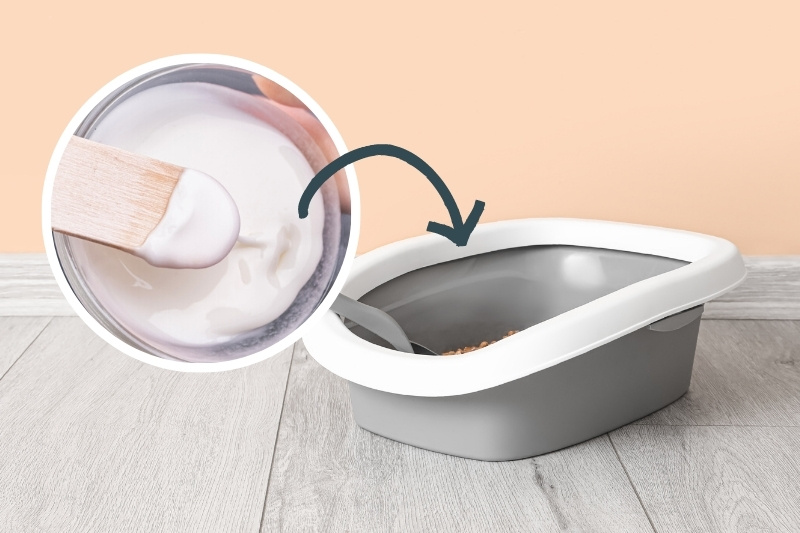
Make a paste with some bicarbonate of soda and water. Then apply to the litter tray using a scourer.
For best results, leave the paste in place for a little while – 30 minutes will do it. Then rinse and dry as above. Bicarbonate of soda is a very good option as it’s cheap, handy and fragrance-free so will pass the cat whiff-test.
Some people use washing up liquid or vinegar to get rid of stains, then, once the whole tray is rinsed and thoroughly dry, they apply a layer of bicarbonate of soda to the bottom of the tray before pouring in the fresh litter. This will help combat staining and unfortunate odours.
Other Things to Bear in Mind
Box liners

Box liners are a help and worth considering. They make litter removal much easier and keep all the soiled pieces of litter away from the surface of the tray itself so scrubbing can be kept to a minimum.
Self-cleaners
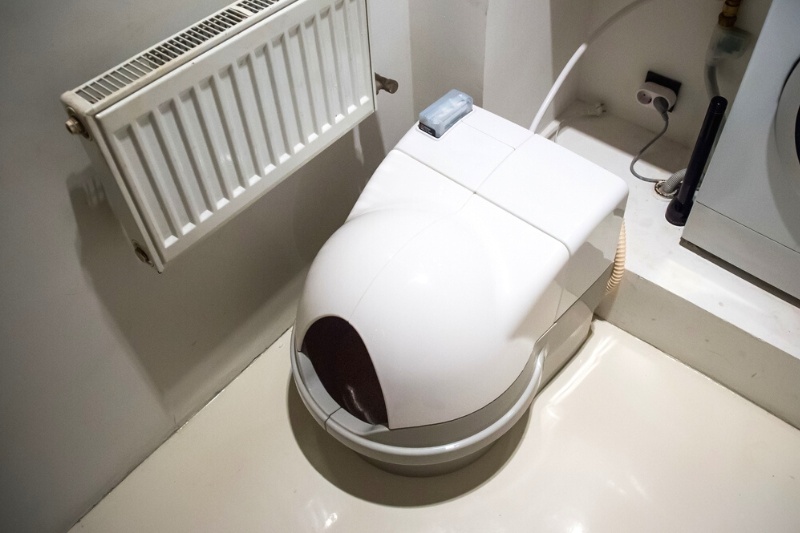
Another purchase that might be worth considering if you’ve read all this and are thinking to yourself, “surely there’s a better way”. Self-cleaning cat litter boxes are available.
They aren’t cheap, however. There are huge benefits to be had, beyond the obvious. The ELS PET Self Cleaning Cat Litter Tray makes your cat look like it’s on telly. Is that Cat Deeley?
What to Avoid When Cleaning a Cat Litter Box
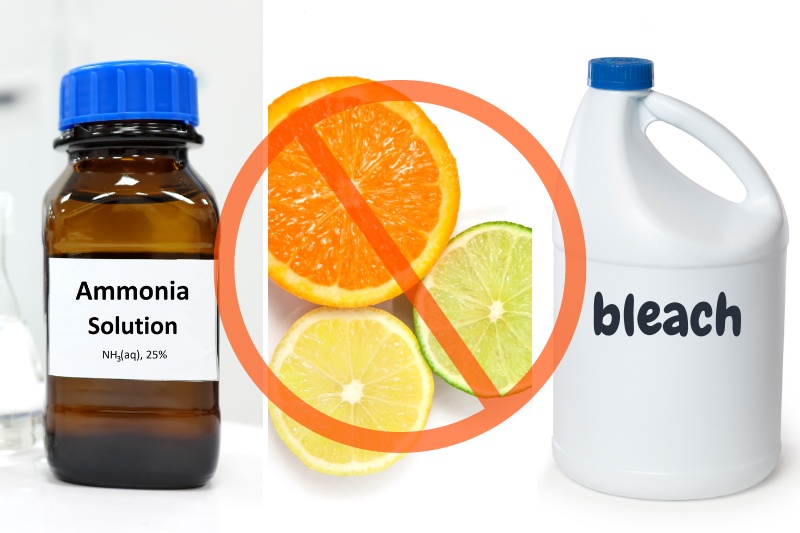
There are certain cleaning substances you shouldn’t use with litter boxes.
Never use anything smelling of ammonia, citrus or bleach, as cats find the smell most unedifying. They will boycott that box.
And definitely never use compound disinfectants such as Phenol or Chloroxylenol, as they are toxic to cats.
Final thing to avoid? Creating a queue. For this reason, it’s advisable to have another tray on the go, so that service is uninterrupted during the cleaning process.
Note that some sources advise you to have a litter box available for each cat you have, plus one more at all times.
So, for one cat, that’s a two-tray situation. For three cats, that’s four trays. Thirty cats? That’s remarkable.
Tray Chic
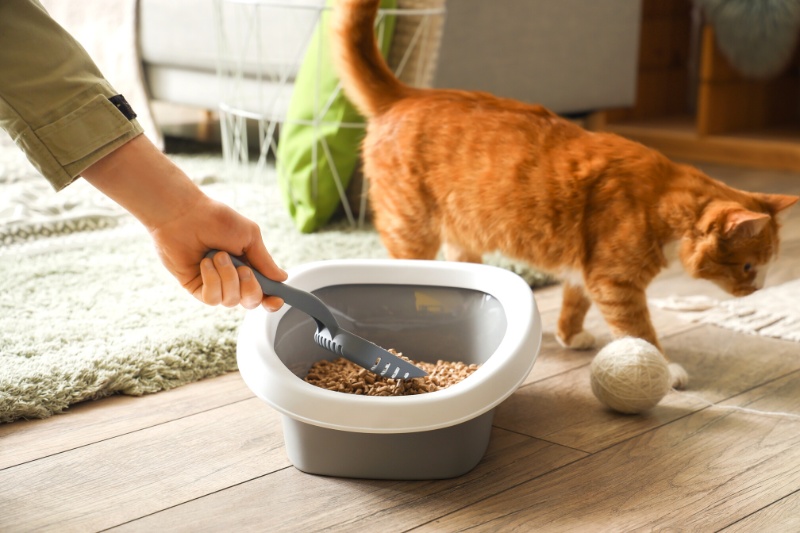
So, now you have all the information you need to keep that litter tray looking fabulous. Your cat will be the envy of the neighbourhood.
However, you do need to keep on top of this routine, or, next toilet time, your cat will keep on top of something you’d rather they didn’t.
And one more tip to impart. Regardless of how pristine you keep that box, you should replace the whole thing every year. This is because damage can occur over time and stubborn stains can become virtually impermeable. And besides, every cat likes the latest gear.

Martin’s life revolves around films, dogs and food, but rarely all at the same time. At least two out of these three like to give clothes and furniture a hard time, and Martin enjoys discovering and writing about new ways to stop them doing their worst.
